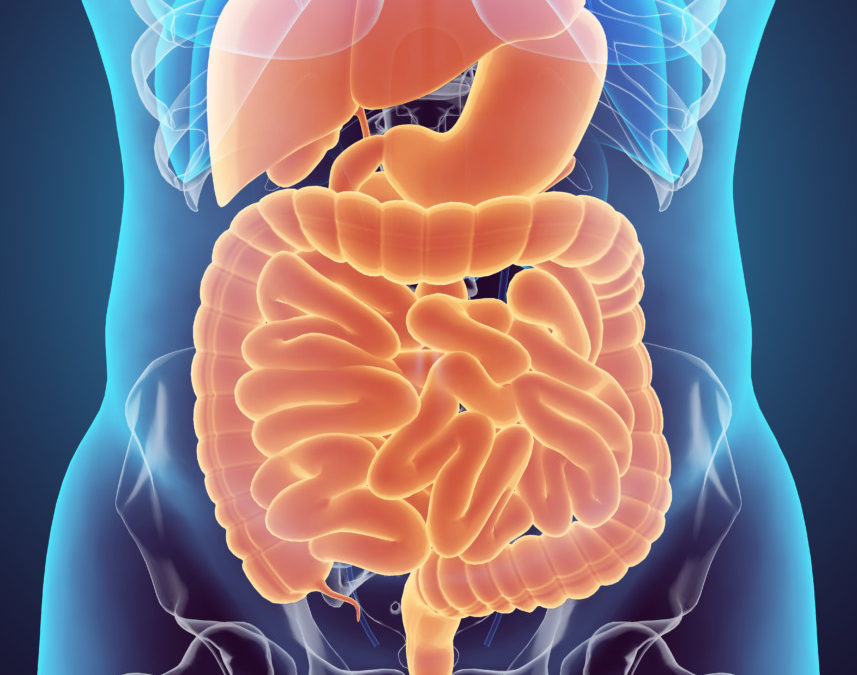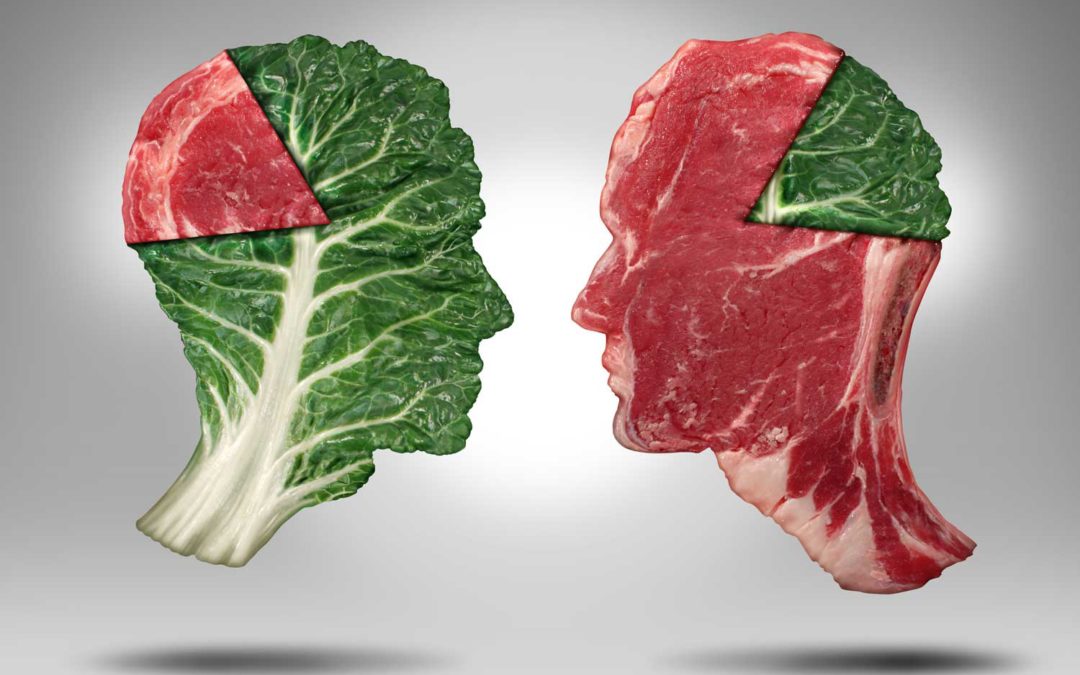
by Amanda Malachesky | Dec 11, 2017 | Digestion, Functional Medicine and Coaching, Inflammation, Symptoms
I know every single one of you out there reading has experienced a symptom at one time or another…a headache, an upset stomach, aches and pains, bad moods, or fatigue. This seems like a wide-ranging list, and it is. But what if I told you that each of them has its roots in inflammation?
It’s becoming widely accepted that most symptoms, illnesses, and diseases have inflammation at their core. Inflammation is an important, natural, and normal part of our immune and injury-repair response, like when you have a fever, or have a twisted ankle.
But what about those situations where the inflammation seems to get turned on, and doesn’t shut off? What about those chronic symptoms that repeat monthly, daily, or weekly, like panic attacks, PMS, migraines, bloating, diarrhea, or joint pain. How do you normally handle them?
Many of us reach for an over-the-counter or prescription medication to handle these bothersome symptoms. Let’s face it: when you have a raging, pounding headache, or a panic attack and you have stuff you need to do, our impulse is to shut that annoying symptom off so we can get on with our day.
But symptoms that return over and over again are signs that something isn’t right in our bodies, and they should be addressed. The OTC and prescription meds can help relieve the immediate symptoms, but this is only a short-term solution. And what about the silent inflammation that you can’t feel in your body, but that is causing internal damage nonetheless? Heart disease is a classic example of this. I want to share a little about how symptoms show us that inflammation is present…
Silent Inflammation
Inflammation is a normal and natural part of our body’s response to injury or invasion. When you twist that ankle, or breathe in a virus or bacteria, immune cells rush to the area to clean up the injured tissue, or kill and remove the invaders, and this causes swelling, redness, heat, and pain. These symptoms are proof that the immune system is at work and doing its job.
A fever is your immune system trying to make your body an inhospitable environment for an invading virus or bacteria.
An allergy is a different kind of inflammatory response, where the immune system has become sensitized and trained to react to an invader, even if it isn’t a dire threat, like a pollen, or a food, like peanuts. In minor cases, this can lead to hayfever or skin rashes, with itchy and watery eyes, sneezing, and nasal congestion, and in severe cases, anaphylaxis.
If you have an allergy, I’m sure you likely know it, and avoid the allergens to the best of your ability, to avoid the symptoms.
But sometimes, we are sensitive to foods or other environmental contaminants, but we aren’t yet aware of them, because we are constantly exposed to them, and the effects are sub-clinical, or below a detectable experience, and this is one source of silent inflammation.
Another major source of silent inflammation that you may not be aware of is frequently elevated blood sugar. In this case, excess sugars are converted to triglycerides, and these sticky triglycerides, along with the LDL cholesterol, adhere to the inside of our arteries.
This artery “spackling” shouldn’t be there, and the arteries become inflamed from the build up, in an attempt to fix the situation. The trouble with this process is that you can’t feel it. It doesn’t cause any specific signs or symptoms until the process has been going on for years.
If you have regularly occurring symptoms, especially of the digestive variety, mood challenges like depression or anxiety, aches and pains, headaches, or fatigue, it’s likely there are sources of inflammation in your diet, lifestyle habits, or living environment that are contributing to your discomfort.
Though there is often an ongoing, and regular exposure to these items, the response is low-grade, and the effects may be sub-clinical, or below the level where you can experience them. But even if you aren’t aware that they are contributing to inflammation, they are slowly creating damage to your cells, organs, and systems.
Eventually, you begin to notice you don’t feel quite so energetic anymore, you have a harder time getting out of bed in the morning. You can’t exercise like you used to, or worse, you start experiencing symptoms that get in your way of living life like you’d like to. You feel down and out, and don’t want to go out with your friends, you have headaches that keep you home from work, or anxiety that makes it difficult to travel, or you hurt all the time, and you can’t play with your kids or your grandkids. These impacts are real, and account for a lot of missed work and missed opportunities and fun.
How to Reduce Hidden Inflammation
The good news is that there is a lot you can do to reduce hidden inflammation! Clearly identifying the sources of this silent inflammation is the key to resolving chronic symptoms, and even disease diagnosis at the root cause level.
The place to begin is always with food. So many of us are suffering from unacknowledged food sensitivities. When you know where to begin, this is an area of our life that we have total control over.
The biggest food players in silent inflammation are gluten, dairy, and sugar. The place to begin is by eliminating them for a minimum of three weeks, and then add them back in, to see if your body can tolerate them. If you find you can’t tolerate a food, now you are armed with some very valuable information about how your symptoms are connected to your food, and you can make appropriate choices, and make the necessary choices to reduce or eliminate your symptoms.
Often, people feel dramatically better when they try this: they lose weight, their moods and sleep improve, their aches and pains decrease significantly, their lab markers improve, and they have more energy. I see this all the time with my clients.
If these three foods don’t make much of a difference, then the other players need to be identified.
Certain foods added to your diet can help reduce inflammation while you work on identifying your unique culprits. Turmeric is a long-recognized mediator of inflammation, and supplementing may help with many types of inflammatory conditions including joint pain, digestive conditions like IBS and IBD, cancer, diabetes, and more. Other anti-inflammatory foods include ginger, greens, berries, healthy fats from wild-caught fish and olive oil, and more.
The guidance of an experienced nutrition coach can help you navigate this process, and identify the specific foods, habits, or environmental irritants that are contributing to your issues. Things like sleep habits, exercise, mold or chemical exposure, stress, and so on can also be contributors.
What are your contributors? Are you aware of any of them? Comment below to share what you find impacts your feeling of well-being.
Despite research and trials, are you still confused about what to eat to avoid your symptoms and feel better? A whole-picture approach is important when using natural methods to address a health problem. I encourage you to download your free copy of Roadmap to Gut Recovery, my free action guide that gives you action steps you can take right now to get started identifying your unique symptom triggers and root causes of your condition.
If you need more individualized help, I invite you to schedule a free, 30-minute Assessment Session with me. I can help you identify where your next best steps should be on your healing journey, and we can explore whether we would be a good fit for working together.

by Amanda Malachesky | Dec 6, 2017 | Brain Health, Digestion, Functional Nutrition, Inflammation, Symptoms
What body system is at the center of any illness, symptom, diagnosis, happy moods, well-being, and vibrant health?
If you guessed the digestive system, then you nailed it! Digestive symptoms are strong clues that something isn’t right inside our bodies, and that our digestive system needs a little bit of extra attention. Things like constipation, heartburn, acid reflux, bloating, gas, and more are important message that are worthy of our attention.
Sometimes, this can seem a little bit confusing. You mean that digestion plays a key role in depression or anxiety? Or heart disease? Or Arthritis? The answer is yes. Here’s how.
Reason #1: Digestion is our Source of Needed Nutrients
A full spread of nutrients is needed for the body to do everything it does: power our muscles and brain so we can move and work, repair damage, detoxify any exposure to harmful substances, maintain appropriate levels of minerals and vitamins, and so on.
If shortages of nutrients become significant enough, function begins to break down. For example, if we don’t have enough B vitamins and antioxidants, such as vitamin A, C, and E, then we won’t be able to neutralize cell-damaging free radicals, because this clean up process require these nutrients.
Digestion is our source for these nutrients that power thousands of essential body functions every single day. If digestion is compromised, by hidden infections, inflammation from food sensitivities, previous antibiotic use or other medications, or other factors, it’s not too difficult to become deficient in important, necessary nutrients.
Interestingly, many of the nutrients we use are synthesized in our digestive tracts by the resident bacteria. If we have an imbalance of this microbiome, we may have a compromised ability to create and use certain nutrients.
Cleaning up the digestive system is super important, to make sure we are able to access all the nutrients we need from our food.
Reason #2: The Gut Has a Direct Communication Line to the Brain
The digestive system has a direct line of communication with the brain: the vagus nerve. When something goes wrong in the gut, say it gets invaded by a bacteria, the vagus nerve sends a signal to the brain that something is wrong, and this can affect our moods.
Have you ever heard the expression “I had a gut feeling”, or “I had butterflies in my stomach”? This is the gut-brain connection in action. How about the way in which nervousness can trigger diarrhea or nausea? Same thing.
There are lots of studies being published all the time showing how the composition of the gut microbiome has a profound affect of emotions and health. Balancing your microbiome is not only the key to decreasing digestive symptoms and making sure you can access and make important vitamins and other nutrients, it is also the key to promoting positive moods, and protecting your body from invading microorganisms.
The gut immune system is designed to protect us from hitchhiking bacteria, parasites, viruses, and fungus. If this system goes down, or is imbalanced, we are vulnerable to infection, imbalance, and all the downstream effects (see Reason #1).
80% of the immune system is centered in the gut, because besides our respiratory systems and reproductive systems, this is the place where we are daily exposed to outside influences. This means it is also the place where we have a lot of leverage to shift the terrain of our health.
Reason #3: Healthy Elimination Means Healthy Detox
Now we’re going to talk about the other end of digestion, which is elimination. Like I mentioned in Reason #1, our body uses lots of its nutrients to clean up and detoxify incoming pollutants.
In today’s day and age, we are constantly exposed to chemicals in the form of pesticides, herbicides, xenoestrogens, heavy metals, petrochemicals in air pollution, and many of us work in environments where we are exposed to other types of toxins.
Our liver does the heavy lifting here, using up all those antioxidants and B vitamins and amino acids to break the toxins down into water or fat-soluable parts that can then be eliminated by the kidneys in the urine, or by the bowel, in the stool.
But how many of us poop irregularly, or struggle with constipation? Ideally, we should be pooping 1-3 times per day, with ease. If you aren’t eliminating regularly, it’s likely you aren’t efficiently eliminating all those environmental toxins that your body is working so hard to break down. These toxins accumulate in the digestive system, and can affect the balance of the microbiome (see Reason #2), or are reabsorbed from the bowel, and can end up depositing into tissues in the body, and causing problems.
Making sure you are regularly eliminating is a super important part of supporting digestive health, and promoting overall health.
How do we make sure the digestive system is working well?
The first step is to remove any inflammatory foods. I always start my clients with removing gluten, diary, and sugar. If we need to identify other foods, we go deeper, but many people find that these three foods are actually contributing to digestive and deeper trouble.
The next step is to supply nutrients that may be deficient, to make sure the body can keep performing its essential functions of maintenance and detoxification.
Lifestyle habits regarding sleep, stress management, and exercise often need to be rearranged to support health, and improve and promote effective digestion.
Finally, if all these changes don’t resolve digestive or other challenges, we need to explore whether there may be hidden infections in the digestive system or elsewhere that need to be addressed.
Working through these steps provides powerful relief from many common symptoms, and even some diseases.
Who knew? Digestion holds the key to better health! What have you found that best supports your healthy digestion? Comment below!


by Amanda Malachesky | Aug 7, 2017 | Chronic Illness, Digestion, Functional Medicine and Coaching, Functional Nutrition

You might think that since I’m a health care practitioner, and I help people sort out the root causes of all manner of health problems that I myself am in perfect health.
Well, wrong…
I wish it were true. The unfortunate truth is that I came to this field because of my own complex, confusing, seemingly-non-diagnosable, multi-tiered illness. And though all of us in these shoes desperately wish for a quick solution to our problems, the cold, hard truth is that the path from A to B is rarely a straight and simple line. It often requires some experimental investigating and self-treatments. Sometimes the steps are clear right away, but other times, they are not.
My training with Functional Diagnostic Nutrition taught me about using specialty lab testing to identify hidden stressors, factors I may not have realized were affecting my health. I was my own first client, and my testing revealed important imbalances and hidden infections I hadn’t known were there. So I began supporting my body to try to correct what I found.
I made improvements, to my digestion, and my moods. I worked hard to readjust my lifestyle habits to support health (i.e. I no longer stayed up till midnight every night, I incorporated daily exercise, and worked on reducing stress). But despite all my best efforts, I remain plagued by food intolerances that make it nearly impossible to eat out or at someone else’s home. I struggle with moods, and I know that my hormones are not right.
So now what?
My Newest, Known Health Challenge: SIBO
Now, I move into deeper layers of inquiry. All the first-line options have not produced the results I’m looking for, and so I look deeper and consider the question: What stone remains unturned? What have I ignored, or maybe not noticed?
Up until now, I hadn’t examined the possibility that I have SIBO, or Small Intestine Bacterial Overgrowth. I lack a few of the normally prominent symptoms, such as horrible bloating, which may be due to the painstaking work I’ve done identifying food triggers. I do have persistent, stubborn constipation, a rosacea-like redness on my face, and have not been able to resolve some of my gut health markers or food sensitivities. All of this, in spite of doing everything “right”. So I finally ran the SIBO test.
The results? I do indeed have methane-dominant SIBO, which causes the telltale constipation. In fact, the test uses a provoking agent, to encourage the bacteria to produce their gases for measurement. I experienced a dramatic increase in symptoms within the five days after the test, so this was another positive indicator for SIBO.
So now I have a new plan to move forward, and I will begin incorporating it next week.
Getting to Point B
The end goal of health maintenance and my coaching with clients, is to help them get to that Point B they are trying so hard to reach. But as I said, the path is never a straight line. Sometimes, we take several wrong turns before the right one turns up. Or we do support work, but it’s not enough. But we need to keep trying, systematically, until we discover what helps move things forward. The mistakes we make along the way provide equally important information. They inform us about our (in)tolerances, our unique physiology, what is already working, or what needs more support. The result of this inquiry is a personalized health plan, tailored just for YOU.
Even more important is having a practitioner or coach committed to working with you through this process. Doing this work on your own is confusing, frustrating, discouraging, maddening, and you may be often confronted by a desire to give up. By a process of tracking, trial, and noting success or failure, we move ever closer to understanding the source of the problem and root cause resolution.
My personal goal is to be able to walk into any restaurant and (within reason) eat most items on the menu, and to be able to go to dinner at a friend’s home without calling ahead to find out what will be served. Now that I’ve eliminated foods that seem to cause problems to alleviate my symptoms, addressed parasites, added in general digestive support, and removed endometriosis via surgery, my next step is to encourage my small intestinal health back to normal.
I’m going to keep at it with my own personal health, and so can you. If you’re interested in the kind of support I’m describing here, schedule a free discovery session here.

by Jen Briar-Bonpane | May 16, 2017 | Brain Health, Digestion, Functional Nutrition, Nutrition, Uncategorized

Most of us know by now that refined sugars aren’t good for us and don’t serve our long term health goals. So why is it so hard to resist a stop at the office cookie jar? Understanding how sugar and sweets affect our brain chemistry and mood can be the key to making healthier choices.
Maintaining balanced blood sugar is essential for overall health. Blood sugar that swings high and drops low throws the body into a state of imbalance that can make you feel extremely tired, jittery, anxious, or angry. Excess sugar circulating over time leads to increased insulin production, increased fat storage, high blood pressure, cancer, obesity, diabetes, heart disease, exacerbation of autoimmune conditions, adrenal fatigue, hashimotos, candida, and mental health issues. Eating refined sugar and simple carbohydrates (the “white stuff”) wreaks havoc on our blood sugar and triggers a cascade of reactions in our bodies that affect all of our organ systems.
A few powerful brain chemicals play major roles in driving us to have another muffin, a little more bread, or another quick pass by the candy dish, even when we know we shouldn’t and are committed to our health goals.
- Dopamine is a neurotransmitter that creates feelings of pleasure. When we eat something sweet, we release this potent brain opiate and it makes us feel good…like an instant reward system.
- Another player is the beta-endorphins, which are the brain chemicals known as the brain’s pain killer. They help us cope and boost our feelings of self-esteem. Eating sugar temporarily increases the beta-endorphin levels and leaves us feeling like we can manage the stress of the day a bit better.
- And, of course, our good friend seratonin is part of this as well. When we eat sugar, our insulin levels rise resulting in increased tryptophan which is a precursor to seratonin production. So, more sugar means more seratonin, which helps us feel peaceful and more relaxed.

With these powerful chemicals flooding our system with rewards after we eat sugar, choosing to pass on the treats can be extremely challenging. The good news is that we can stimulate these three neurotransmitters without consuming the sugary foods and simple carbs that can feel good in the moment but set us up for disease in the long term. Here are a few ideas:
- Tyrosine-rich foods like lima beans, avocados, pumpkin seeds, and almonds can stimulate the release of dopamine
- Tryptophan-rich foods like spinach, salmon, mushrooms, mustard greens, and tamari help increase seratonin production
- The taste of something sweet on the tongue helps these feel-good brain chemicals flow. So try experiencing the taste of sweetness without the harm of refined sugar by using low-glycemic sweeteners such as stevia, or naturally sweet low-glycemic foods like grapefruit, nectarines, pears, and blueberries.


by Amanda Malachesky | Feb 25, 2017 | Digestion, Functional Nutrition, Symptoms
So many of my clients suffer from heartburn, indigestion, belly aches, bloating, gas, constipation, or diarrhea. Are you one of them? I wouldn’t be surprised. Almost everyone has at least one of these symptoms on at least a semi-regular basis.
In particular, heartburn and reflux seem to be the most misunderstood of all. Heartburn is commonly thought, by doctors and regular people alike, to be caused by too much stomach acid. Common recommendations are antacids, and prescription PPIs (proton pump inhibitors), such as Prilosec.
But what would you say if I told you that heartburn is actually caused by too little stomach acid? Allow me to illuminate the physiology that explains why.
The stomach is designed to tolerate an extremely low pH of 1.0-1.5. It naturally creates hydrochloric acid when we begin to smell and think of eating, and while we eat our stomach with food. The hydrochloric acid has two functions: to chemically break down proteins into peptides, and to kill any incoming pathogens, such as unfriendly bacteria or parasites. It also facilitates absorption of vitamin B12 and iron. Vitamin B12 assists many essential processes in your body, and iron is important for energy levels. Do any of my readers out there have indigestion and fatigue?
The sphincter between the esophagus and the stomach (Lower Esophageal Sphincter or LES) maintains its normally-closed state by being exposed to adequate stomach acid. When stomach acid decreases, the LES becomes loose, and allows the acidic contents of the stomach to leak back into the esophagus. Because this material is quite acidic and because the esophagus isn’t designed to handle this acid, the sensitive skin there gets burned by the acid, and causes the familiar chest pain of heartburn.
The unfortunate truth about PPIs and antacids are that they are temporary fixes that may relieve immediate symptoms, but they do nothing to address the underlying cause of the heartburn, and further exacerbate the underlying cause: LOW stomach acid. Possible causes of low stomach acid include:
- Chronic stress
- Lack of pre-meal practices, such as preparing, smelling, and thinking about food (for example, eating convenience food on the run, in a hurry)
- Pathogenic infections
- Aging (we tend to produce less as we age)
- Hormone imbalances
- Consumption of coffee, chocolate, sugar, and alcohol can weaken the lower esophageal sphincter (LES), allowing heartburn to occur.
There are many other possible reasons why digestion may be compromised besides low stomach acid, such as inflammation from food sensitivities which can lead to malabsorption, slow motility, or small intestinal bacterial overgrowth (SIBO), which can lead to severe gas, bloating, and intolerance of certain foods, to name a few. But the phase of digestion that occurs in the stomach is one of the first major steps in the process, and when compromised, every step downstream is more of a challenge than it should be.
Here are some gentle, easy steps you can take to increase your stomach acid, improve digestion:
- Take a few minutes before your meals to look at, smell, and imagine eating your food, and express gratitude for your food, to stimulate saliva and hydrochloric acid secretion.
- Chew your food thoroughly, to help the acid you are making do its job more effectively.
- Consume some lemon or apple cider vinegar in water first thing in the morning, and before a high protein meal. Aim for 30 minutes before eating.
- If you suffer from heartburn and you consume coffee and/or alcohol, try eating some food first, to prevent weakening of the LES.
With these tips, I hope that you will find your digestion, energy, and elimination improving. Add a comment, and let me know if any of these tips made a difference for you.


by Amanda Malachesky | Jan 18, 2017 | Digestion, Functional Nutrition, Nutrition, Uncategorized

Are you thinking I’m talking about the difference between the Standard American Diet (SAD) and a plant-based diet?
Think again.
I have been a dedicated diet experimenter. Not a calorie-restriction dieter, but I have tried being vegan, vegetarian, pescatarian, mostly vegetarian with only familiar meat sources, gluten-free, sugar-free, paleo, keto, to name a few. I was trying all of these diets to try to improve my health problems, which in simple terms translated to hormone issues and fatigue. Some of them improved my health, and some quickly proved problematic.
While appropriate food is absolutely a crucial part of any healing protocol, understanding WHY you choose the foods you do is equally important. And if you are managing long-term symptoms or health problems, this is even more the case. Ultimately, there is no one right diet for everyone. Let me repeat: There is no one right diet for everyone! In other words, your food needs are very individual. Ignore this truth at your peril. Let’s dissect what I’m talking about here.
Quality Food, but Wrong Ratios
A few years ago, feeling bad in more ways than one, I stumbled across some information about the keto-adapted diet. I had already been eating a quality, low-processed-food, organic diet for many years, but I still had a dedication and practical addiction to eating carbohydrate-rich foods, including sugary treats. As long as they were gluten-free, we’re doing great, right?!
The keto dietary theory (and paleo theory, which overlaps in many ways) suggests that our bodies do not need to rely exclusively on glucose (sugar) to power our body, and that we can adapt to burning fat as ketones instead. In a keto diet, you eat a high fat, moderate protein, and low carb diet, which turns out to be absolutely delicious! Bacon, cream cheese, and butter are back on the menu, along with grass-fed meat and low carb vegetables. Grains, sugar, and high starch veggies are avoided, as are fruit, except for a small amount of berries. This diet works really well in a lot of cases to transform blood sugar, inflammation, and insulin issues, and reset metabolism. It often helps people lose weight.
When I found keto, I was ALL in! I had an extra fifteen pounds to lose, and hadn’t been feeling myself, and was sure that if I tried this, all my problems would be solved!
You can probably guess I’m going to suggest something different happened. I did feel good for a while, though not “amazing” as so many others advertised. I did lose the extra weight I didn’t want. But after about 8 months, my painful cycles turned to severely painful. I started sleeping even worse than I had been. And I had absolutely no energy. I could hardly get up off the couch, and folding my laundry had me needing a nap. What was going wrong??
In the end, it turns out that I wasn’t thinking about my health problems functionally. I didn’t consider the WHY behind the weight gain, or the hormonal symptoms I was having any farther than food. And because I wasn’t thinking in this way, the keto diet actually turned out to be the perfectly wrong solution. The dramatic increase in dairy consumption worsened my hormone symptoms, because dairy, even if it comes from dairies that don’t give supplemental hormones, comes from a lactating or pregnant animal. The low-carb aspect of the diet DID enable to me to break my addiction to carbs, but since my body wasn’t actually able to digest fats very well due to hidden infections I learned about much, the increased fat consumption worsened my digestion and acne, and left me without energy, and further stressed out my adrenal (stress response) system.
Basically, even though the diet I had been consuming before wasn’t great, it was holding together a pretty delicate system of adaptations to adversity in my body, and switching it up without laying a proper foundation had pretty dramatic and negative consequences. I got a “A” for effort, but an “F” for understanding the WHY behind my choices and what their effects would be. In short, I was asking the wrong questions.
Good Intentions, Accidental Consequences
After wondering why my acne was so bad, and my pain worse, and my digestion terrible, I decided to tilt things toward paleo. Add some more starchy vegetables, like sweet potatoes, and carrots, and squash back in, also some fruit, and lots of those yummy almond flour treats you read about on Pinterest!
My energy did improve a little with increased carbohydrate intake. But in spite of these good intentions, and thinking I was doing my immune system and inflammatory response a favor, I found my pain was still just as bad, there was no change in my skin, AND my digestion was even worse! So frustrating!
Enter oxalates. Oxalic acid is a naturally occurring substance found in humans, animals, and some plants. In plants, they are a defense mechanism, to dissuade herbivory. When consumed by humans, they are ordinarily broken down, bound to minerals, and excreted in the urine or stool. However, if a person has a permeable gut, and if that person is also deficient in minerals that bind to oxalates, they can enter the bloodstream, and travel anywhere the body, where they create sharp, jagged crystals that can cause joint and inflammatory pain.
It turns out that many of the foods that are very high in oxalates are also foods that are very commonly used in a paleo-type diet: spinach, chard, beets, sweet potatoes, plantains, almonds (and many other nuts), chocolate, and carob, to name a few.
Ultimately, even though these foods are healthy, and fine for many people, they can compromise others with certain physiological conditions, or make things far worse. Once again, I wasn’t considering the WHY about my symptoms and health issues, which was leading me down the wrong path. This is why it is so very important, if you want to use food as your medicine, to work with someone knowledgeable about food and how it affects the body, and to make choices aligned with where the body is at right now.
CAUTION: Do not go on a low-oxalate diet quickly! Consult with a knowledgeable practitioner to slowly work this into your dietary practice, to avoid painful symptoms!
How to Start Thinking Functionally About Food
Because we eat three or more times per day, it is crucially important to be choosing foods that will help your healing process. But how do you know which ones are right? We have to work carefully to find the foods that help, and identify the foods that trigger a problem. There are several ways to go about this. I’ll briefly describe two methods here: elimination diets, and food tracking. Food sensitivity testing is also an option, but because no lab test is perfect, an elimination diet is the gold standard for getting direct feedback about problem foods.
Elimination Diet:
In an elimination diet, you remove common problem foods, such as gluten, dairy, sugar, corn, soy, and eggs for a period of time, usually 2-3 weeks. Then, you carefully trial each food, one at a time, and only one per every 3-4 days, and observe to see if there are any negative consequences. You might be surprised about what causes a reaction, and the range of possible problems. Things like brain fog, achy joints, headaches, stomach aches, or gas might be some of the things that can happen. Once you are empowered with this information, the mysteriousness of some of these symptoms disappears and puts you back in the drivers seat of your life.
Food Tracking:
Food tracking involves journaling your food on a day-to-day basis for a while, noticing your macronutrient (protein, fat, and carbs) ratios, and noting any symptoms you feel, how your elimination patterns change or remain the same, and how your mood is faring, and seeing if you can correlate your responses to what you are eating. This kind of information also empowers you with the knowledge of what is creating an impact, and what is not, and provides focus on where to direct your attention to get the most benefit.
Download Your Food-Symptom Diary Here










